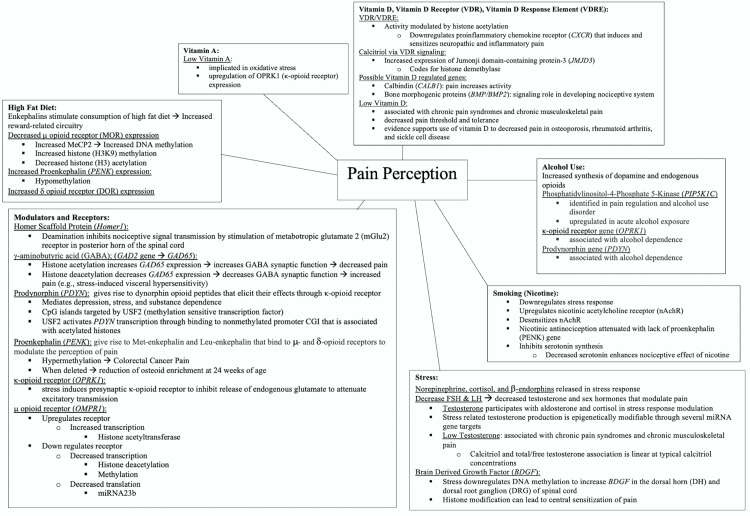Figure 4. Epigenetic pain perception factors: web diagram of environment-gene interactions and epigenetic modifications which may explain the factors in pain perception.
The prodynorphin gene, PDYN, codes for the dynorphin peptide which binds to the k-opioid receptor (OPRK1) for antinociception and analgesia. The proenkephalin gene, PENK codes for Met-enkephalin and Leu-enkephalin binds to m (OMPR1) and d (DOR) opioid antinociceptive analgesic receptors. High-fat diet decreases the expression of OMPR1 but increases the expression of PENK and DOR. Vitamin A deficiency upregulates OPRK1 for antinociception and analgesia.
Vitamin D deficiency decreases pain thresholds and tolerance. The proinflammatory chemokine receptor (CXCR) is downregulated by epigenetic modification of VDR for antinociception and analgesia. Calcitriol modulates vitamin D receptor (VDR) signaling via Jumonji domain-containing protein-3 (JMJD3) for antinociception and analgesia. Calbindin (CALB1) and bone morphogenic proteins (BMP/BMP2) may also be epigenetically regulated by vitamin D for antinociception and analgesia.
Alcohol (ethanol) use increases the synthesis of dopamine and endogenous opioids for antinociception and analgesia; dependence may upregulate or downregulate OPRK1 and PDYN for increased or decreased pain perception. Smoking nicotine upregulates the nicotinic acetylcholine receptors, downregulates the stress response, inhibits serotonin synthesis, and attenuates antinociception and analgesia by depleting proenkephalin.
Stress is known to affect pain perception greatly. Norepinephrine, cortisol, and b-endorphins are released in the stress response which initiates the production of testosterone, which may be epigenetically modified through several unidentified miRNA genes. Low testosterone is associated with chronic pain. There is also a linear correlation between calcitriol and testosterone. Upregulation of brain-derived growth factors (BDGF, BDNF) during stress appears to have the potential for acute antinociceptive and chronic pro-nociceptive effects.

